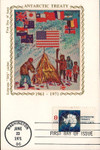
# 1431 FDC - 1971 8c Antarctic Treaty
Antarctic Treaty
Following the 1950 International Council of Scientific Unions meeting, several scientists proposed an International Geophysical Year for 1957-58. It was predicted there would be exceptional solar activity during that time, allowing for some research that could not otherwise be conducted.
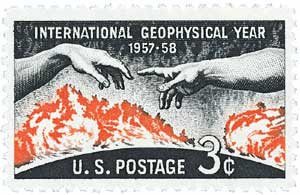
The Geophysical Year officially lasted from July 1, 1957, to December 31, 1958. It was a time for scientists from all over the world to exchange ideas. Sixty-seven countries participated in projects studying space, weather, the oceans, and more. The United States was taken by surprise when the Soviet Union launched Sputnik 1, the first man-made satellite on October 4, 1957. America realized it was behind in technology, and rushed to catch up, resulting in the “Space Race.” Then on January 31, 1958, America’ launched its first satellite, Explorer I.
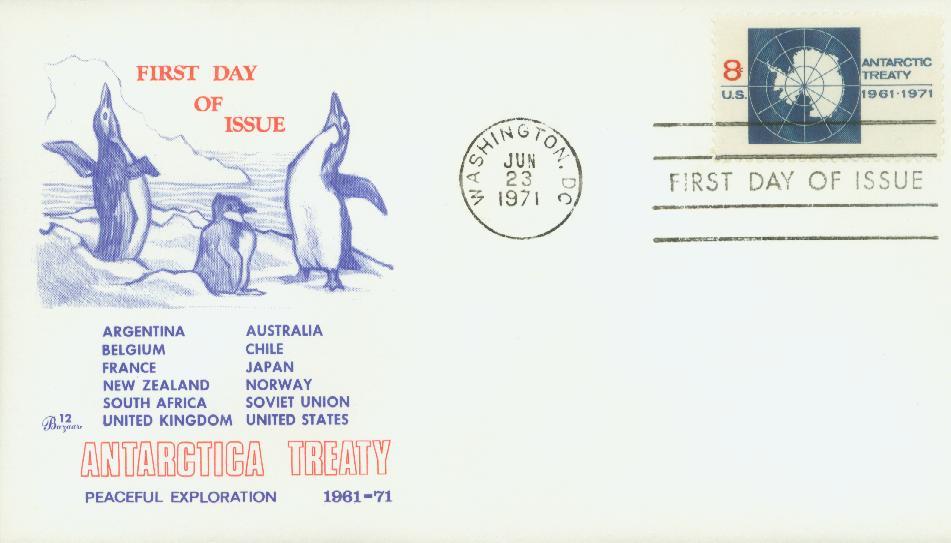
Also during the Geophysical Year, a British and American team discovered the Mid-Atlantic Ridge in the ocean. World Data Centers were established in order for the new findings to be stored and shared. The year proved to be successful for building friendly relations among the world’s scientists and cooperation on discoveries in space and on the Earth.
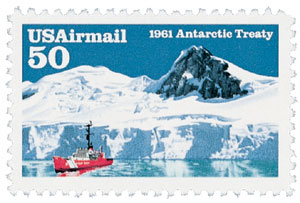
Scientific activities were ongoing in the Antarctic when the International Geophysical Year of 1957-58 encouraged cooperation among 12 interested nations (Argentina, Australia, Belgium, Chile, France, Japan, New Zealand, Norway, South Africa, the Soviet Union, the United Kingdom, and the United States). As the year came to an end, the US suggested a conference to develop an agreement to keep the Antarctic from becoming militarized. At the end of the 1959 meeting, representatives of all 12 nations signed the first Antarctic Treaty. It was ratified by the US in August 1960. On June 23, 1961, President Kennedy proclaimed the treaty in force.

The agreement called for a peaceful use of the land and surrounding ice shelves south of the 60°S latitude line. All members agreed to cooperation between scientists and free access to all stations. It was hoped that this cooperation would lead to more peaceful uses of the Antarctic and its resources. The prohibition of nuclear explosions was the first international treaty to ban nuclear testing. The treaty is still in force today and has expanded to include 53 members. Antarctica is still “used exclusively for peaceful purposes” as stated in the first treaty.
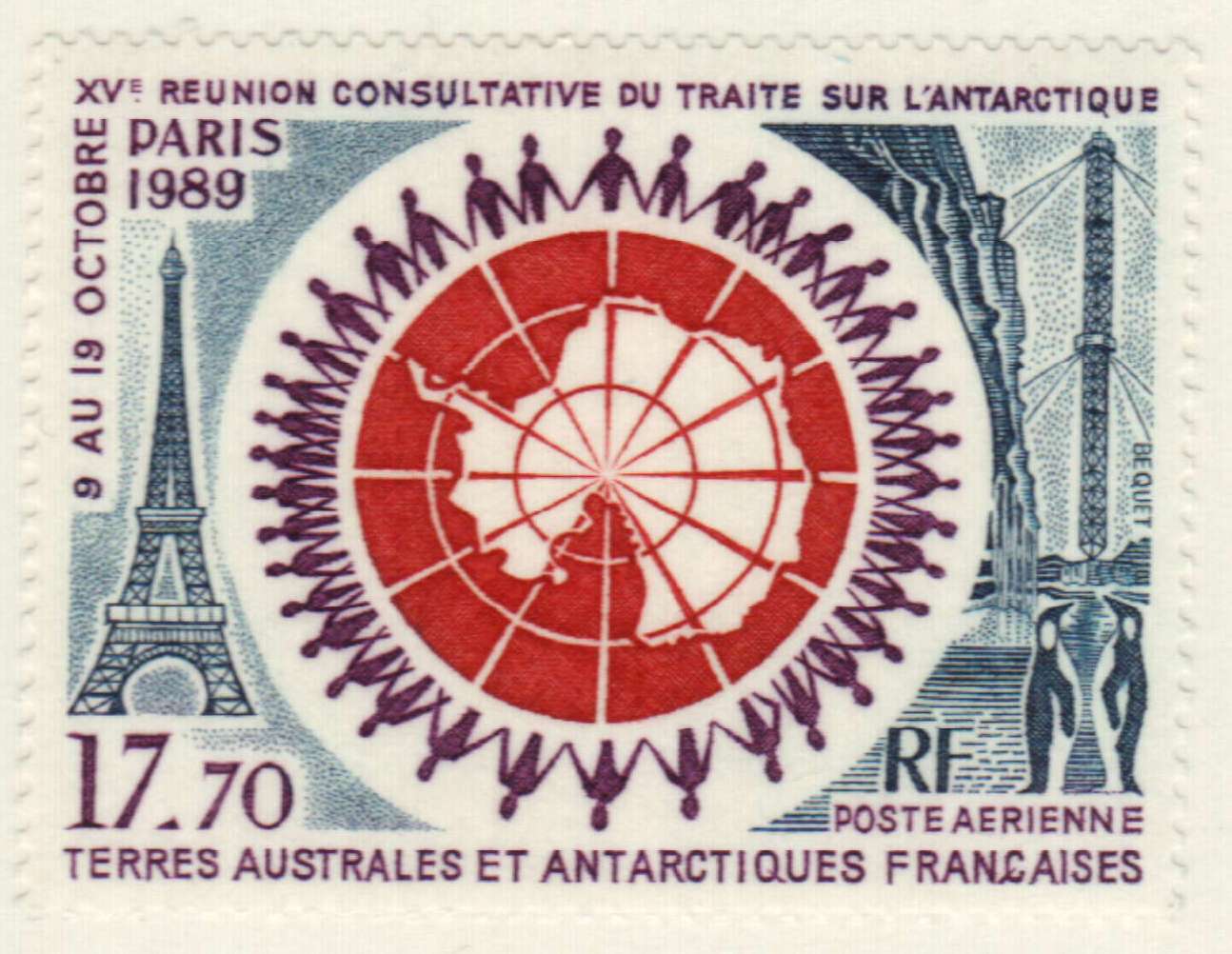
Click here for more about the Antarctic Treaty.
Antarctic Treaty
Following the 1950 International Council of Scientific Unions meeting, several scientists proposed an International Geophysical Year for 1957-58. It was predicted there would be exceptional solar activity during that time, allowing for some research that could not otherwise be conducted.

The Geophysical Year officially lasted from July 1, 1957, to December 31, 1958. It was a time for scientists from all over the world to exchange ideas. Sixty-seven countries participated in projects studying space, weather, the oceans, and more. The United States was taken by surprise when the Soviet Union launched Sputnik 1, the first man-made satellite on October 4, 1957. America realized it was behind in technology, and rushed to catch up, resulting in the “Space Race.” Then on January 31, 1958, America’ launched its first satellite, Explorer I.

Also during the Geophysical Year, a British and American team discovered the Mid-Atlantic Ridge in the ocean. World Data Centers were established in order for the new findings to be stored and shared. The year proved to be successful for building friendly relations among the world’s scientists and cooperation on discoveries in space and on the Earth.

Scientific activities were ongoing in the Antarctic when the International Geophysical Year of 1957-58 encouraged cooperation among 12 interested nations (Argentina, Australia, Belgium, Chile, France, Japan, New Zealand, Norway, South Africa, the Soviet Union, the United Kingdom, and the United States). As the year came to an end, the US suggested a conference to develop an agreement to keep the Antarctic from becoming militarized. At the end of the 1959 meeting, representatives of all 12 nations signed the first Antarctic Treaty. It was ratified by the US in August 1960. On June 23, 1961, President Kennedy proclaimed the treaty in force.

The agreement called for a peaceful use of the land and surrounding ice shelves south of the 60°S latitude line. All members agreed to cooperation between scientists and free access to all stations. It was hoped that this cooperation would lead to more peaceful uses of the Antarctic and its resources. The prohibition of nuclear explosions was the first international treaty to ban nuclear testing. The treaty is still in force today and has expanded to include 53 members. Antarctica is still “used exclusively for peaceful purposes” as stated in the first treaty.

Click here for more about the Antarctic Treaty.




